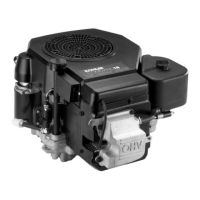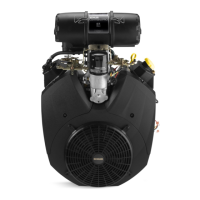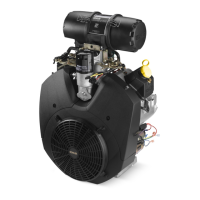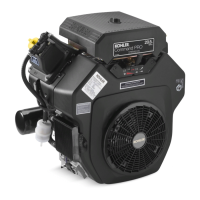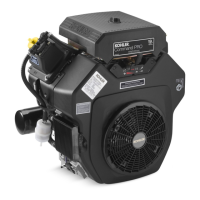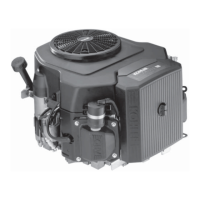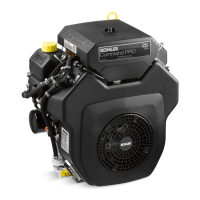7.4
Section 7
Electrical System and Components
Electronic Ignition Systems
There are two diff erent types of ignition systems used on these engines. All systems use an ignition module
which energizes the spark plug. The diff erence in the system is in the way the ignition timing is triggered.
The Fixed Ignition System utilizes a Capacitive Discharge (CD) coil (See Figure 7-3). This is a basic ignition
system that uses a fi xed ignition module where the ignition timing and spark remains constant regardless of the
engine speed.
The Digital Spark Advance Ignition (DSAI) System (See Figure 7-6). This system uses a digital microprocessor
which is located in the ignition modules. The ignition timing varies depending upon the engine speed with this
system.
Molex Plug
(Some Models)
Figure 7-3. Electronic CD Fixed Ignition Timing System.
Fixed Timing CD Ignition Systems
This system (Figure 7-3) consists of the following
components:
• A magnet assembly which is permanently affi xed
to the fl ywheel.
• Two electronic capacitive-discharge ignition
modules (Figure 7-4) which mount on the engine
crankcase.
• A kill switch (or key switch) which grounds the
modules to stop the engine.
• Two spark plugs.
Operation
As the fl ywheel rotates, the magnet grouping passes
the input coil (L1). The corresponding magnetic fi eld
induces energy into the input coil (L1). The resultant
pulse is rectifi ed by D1 and charges capacitor C1.
As the magnet assembly completes its pass, it
activates the triggering device (L2), which causes
the semiconductor switch (SCS) to turn on. With
the device switch ON, the charging capacitor (C1)
is directly connected across the primary (P) of the
output transformer (T1). As the capacitor discharges,
the current initiates a fast rising fl ux fi eld in the
transformer core. A high voltage pulse is generated
from this action into the secondary winding of the
transformer. This pulse is delivered to the spark plug
gap. Ionization of the gap occurs, resulting in an arc
at the plug electrodes. This spark ignites the fuel-air
mixture in the combustion chamber. See Figure 7-5.
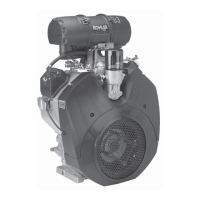
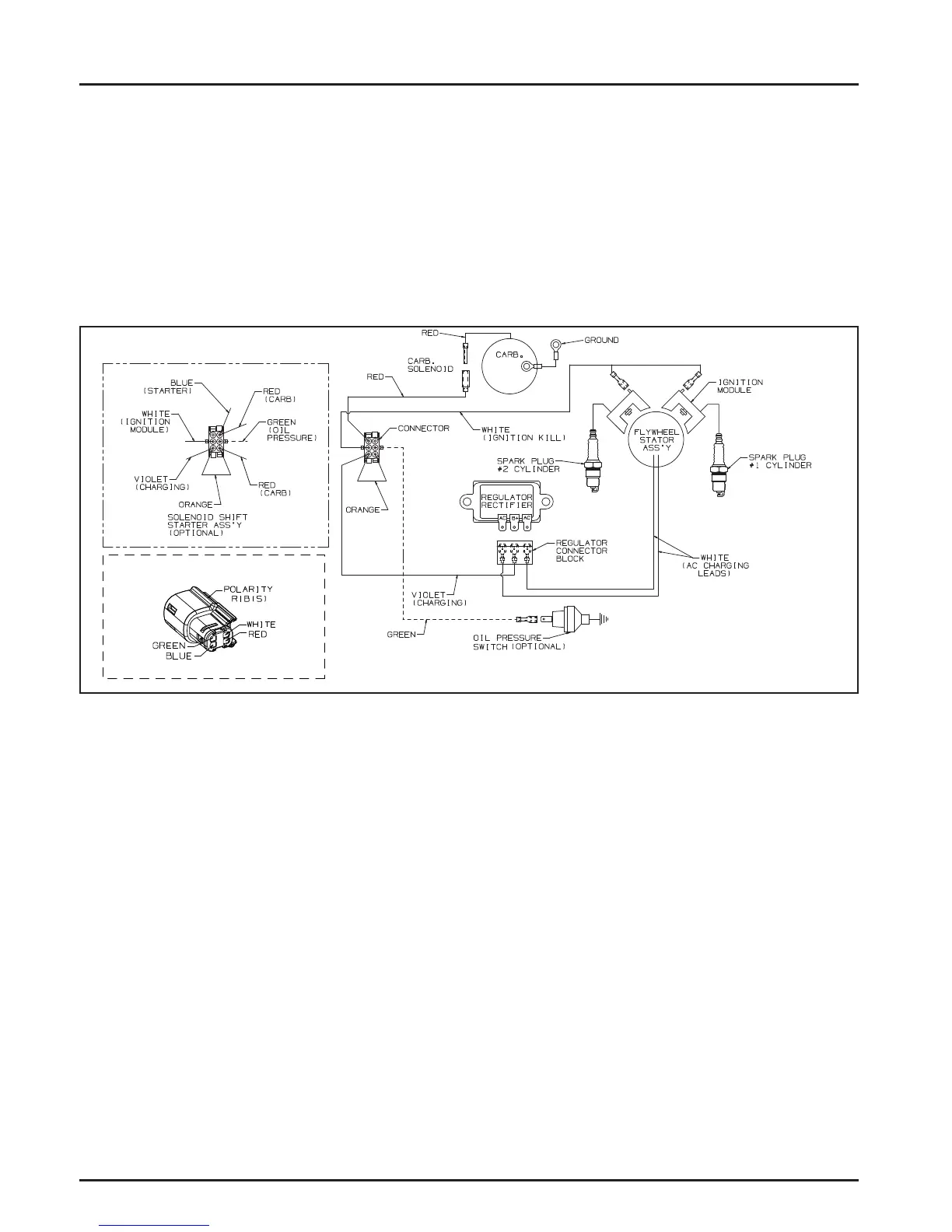